If you been following along to my blog, then you may be aware, another position I hold is as the US Sales Rep for Dream Italy, and incredible DMC in Italy. That I've been using for nearly 15 years. I'm now the sole rep of Dream Italy anywhere in world, in addition to the owner himself. You come to me! I Got YOU! Everything is going to be PERFETTO, BRAVASSIMO! ANDIAMO!
With that said I would like to start highlighting some of the incredible itineraries and services I offer as part of Dream Italy. Yes I offer guides, transfers and drivers all over La Bella Italia, but we do so much more than that.
Today I introduce to you a private tour of Sicily, I'm calling 'The Sicilian'. Now, all private tours can be completely customized to you desires. So by no means is this all fixed, but its just a idea of what we can do for you. & if you love this itinerary, then let's go! WE KNOW ITALIA!
THE SICILIAN - 10 Day Private Tour of Sicily
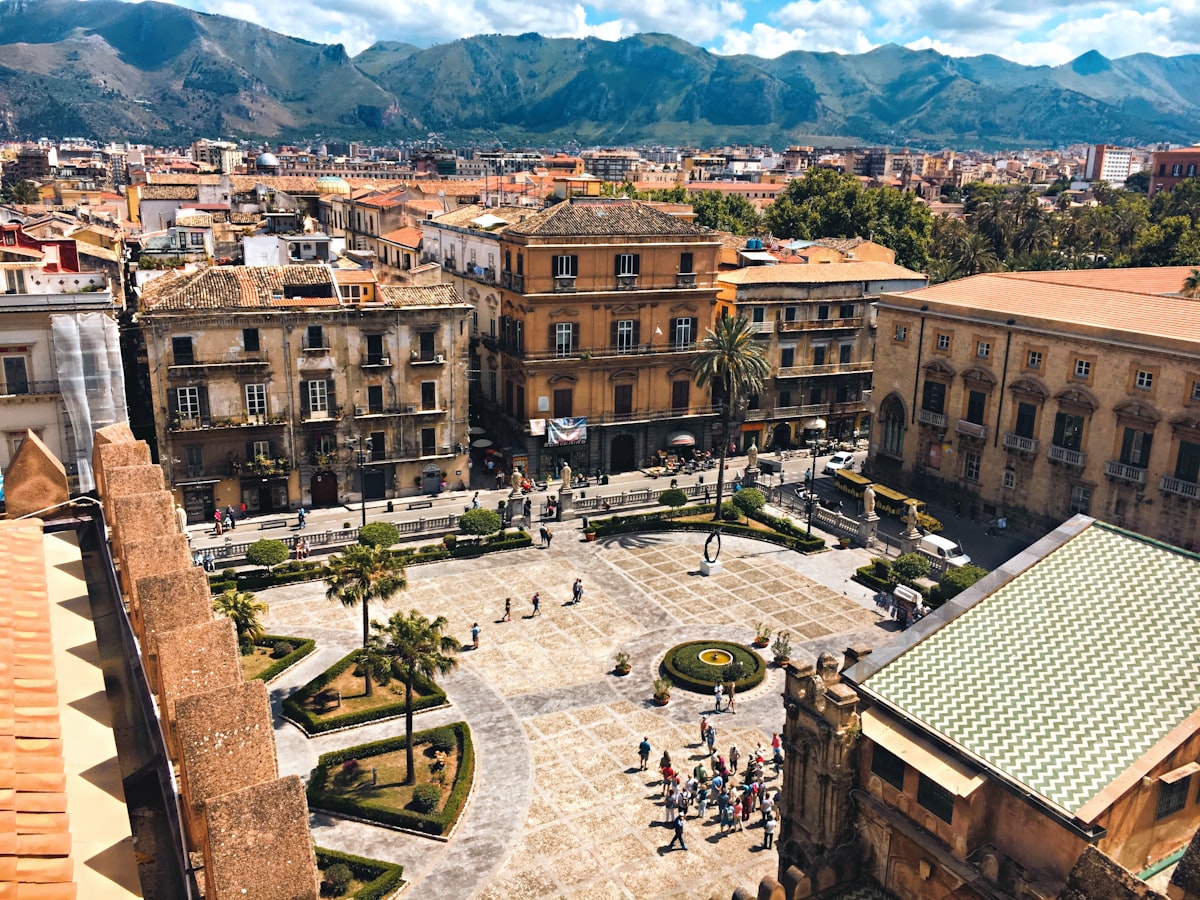
Day 1
Land into Palermo airport, a driver will pick you up to take you to your hotel
According to your arrival time, there might be a PM walking tour with a guide to admire the highlights of downtown Palermo. Overnight Palermo
Day 2
AM tour by guide and driver to Palermo and Monreale and its Duomo. After the occupation of Palermo by the Arabs (the Emirate of Sicily), the Bishop of Palermo was forced to move his seat outside the capital. The role of a cathedral was assigned to a modest little church, Aghia Kiriaki, in a nearby village later known as Monreale. After the Norman conquest in 1072, Christians took back the former Palermo cathedral. Probably the village's role as a temporary ecclesiastical centre played a part in King William II's decision to build a cathedral here. Monreale was a small village for a long time. When the Norman Kings of Sicily chose the area as their hunting resort, more people and commerce came to the area after the royalty built a palace (probably identifiable with the modern town hall).
Under King William II, a large monastery of Benedictines coming from Cava de' Tirreni, with its church, was founded and provided with large assets. The new construction also had an important defensive function. Monreale was the seat of the metropolitan archbishop of Sicily which from then on exerted a significant influence over Sicily. In the 19th century, underage marriages, or those performed without the blessing of the bride's parents, were known as "the marriages of Monreale", according to Eliza Lynn Linton. These referred to marriages performed in remote places, where the law was less observed.
Overnight Palermo

Day 3
Full day Cefalù by driver and guide. Of Greek foundation, the city evidently derived its name from its situation on a lofty and precipitous rock, forming a bold headland. projecting into the sea. Despite the Greek origin of its name, no mention of it is found in the works of Thucydides, who expressly says that Himera was the only Greek colony on this coast of the island; it is probable that Cephaloedium was at this time merely a fortress belonging to the Himeraeans and may very likely have been first peopled by refugees after the destruction of Himera. Its name first appears in history at the time of the Carthaginian expedition under Himilco, 396 BC, when that general concluded a treaty with the Himeraeans and the inhabitants of Cephaloedium.. But after the defeat of the Carthaginian armament, Dionysius the Elder made himself master of Cephaloedium, which was betrayed into his hands. At a later period we find it again independent, but apparently on friendly terms with the Carthaginians, on which account it was attackers and taken by Agathocles, 307 BC.
In the First Punic War, it was reduced by the Roman fleet under Aulus Atilius Calatinus and Scipio Nasica, 254 BC, but by treachery and not by force of arms. Cicero speaks of it as apparently a flourishing town, enjoying full municipal privileges; it was, in his time, one of the civitates decumanae which paid the tithes of their corn in kind to the Roman state and suffered severely from the oppressions and exactions of Gaius Verres- It also minted coins. No subsequent mention of it is found in history, but it is noticed among the towns of Sicily by the geographers Strabo, Pliny, and Ptolemy, and at a later period its name is still found in the itineraries.
After the fall of the Western Roman Empire, the town remained part of the Byzantine Empire and the settlement was eventually moved from the plain to the current spur for defense, like many cities during the Byzantine era, as the Mediterranean was no longer solely controlled by the empire and was subject to Arab incursions. Nevertheless the old town was never entirely abandoned. In 858, after a long siege, it was conquered by the Aghlabids. For the following two centuries, it was part of the Emirate of Sicily.
In 1063, the Normans captured it. In 1131, Roger II, king of Sicily, transferred it from its almost inaccessible position to one at the foot of the rock, where there was a small but excellent harbor and began construction of the present Byzantine-style cathedral. In addition to Arabs the area was still inhabited by its original Greek speakers (today called Byzantine Greeks, then called Rûm i.e. 'Romans,' by the Arabs), and these Christians were then still members of the Greek Orthodox Church. Between the 13th century and 1451, it was under different feudal families, and then it became a possession of the Roman bishops of Cefalù. During the Risorgimento, the patriot Salvatore Spinuzza was shot here in 1857. Cefalù became part of the Kingdom of Italy in 1861.
Overnight Palermo
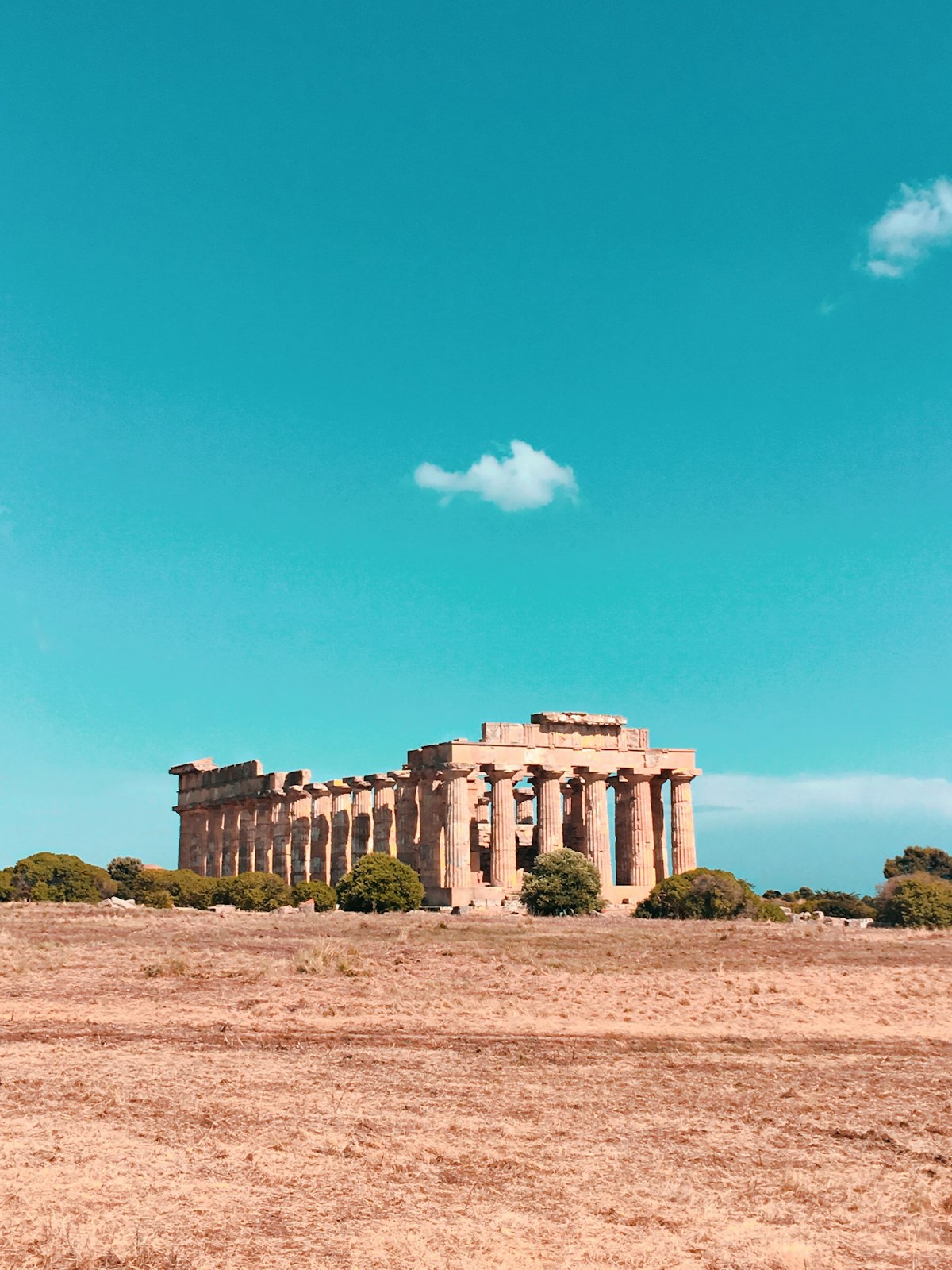
Day 4
Leave Palermo on the way to Agrigento. During the rie you will stop in the amazing dead town of Selininunte and a professional guide will give you a tour of the ancient site. Selinunte was one of the most important of the Greek colonies in Sicily, situated on the southwest coast of that island, at the mouth of the small river of the same name, and 6.5 km west of the Hypsas river (the modern Belice). It was founded, according to the historian Thucydides, by a colony from the Sicilian city of Megara Hyblaea, under the leadership of a man called Pammilus, about 100 years after the foundation of Megara Hyblaea, with the help of colonists from Megara in Greece, which was Megara Hyblaea's mother city. The date of its foundation cannot be precisely fixed, as Thucydides indicates it only by reference to the foundation of Megara Hyblaea, which is itself not accurately known, but it may be placed about 628 BCE. Diodorus places it 22 years earlier, or 650 BCE, and Hieronymus still further back in 654 BCE. The date from Thucydides, which is probably the most likely, is incompatible with this earlier date.[3] The name is supposed to have been derived from quantities of wild celery that grew on the spot. For the same reason, they adopted the celery leaf as the symbol on their coins.
Selinunte was the most westerly of the Greek colonies in Sicily, and for this reason they soon came into contact with the Phoenicians of western Sicily and the native Sicilians in the west and northwest of the island. The Phoenicians do not at first seem to have conflicted with them; but as early as 580 BCE the Selinuntines were engaged in hostilities with the non-Greek Elymian people of Segesta, whose territory bordered their own. A body of emigrants from Rhodes and Cnidus who subsequently founded Lipara, supported the Segestans on this occasion, leading to their victory; but disputes and hostilities between the Segestans and Selinuntines seem to have occurred frequently, and it is possible that when Diodorus speaks of the Segestans being at war with the Lilybaeans (modern Marsala) in 454 BCE, that the Selinuntines are the people really meant.
The river Mazarus, which at that time appears to have formed the boundary with Segesta, was only about 25 km west of Selinunte; and it is certain that at a somewhat later period the territory of Selinunte extended to its banks, and that that city had a fort and emporium at its mouth. On the other side Selinunte's territory certainly extended as far as the Halycus (modern Platani), at the mouth of which it founded the colony of Minoa, or Heracleia, as it was afterward called. It is clear, therefore, that Selinunte had already achieved great power and prosperity; but very little information survives about its history. Like most of the Sicilian cities, it passed from an oligarchy to a tyranny, and about 510 BCE was subject to a despot named Peithagoras, who was overthrown with the assistance of the Spartan Euryleon, one of the companions of Dorieus. Euryleon himself ruled the city, for a little while, but was speedily overthrown and put to death by the Selinuntines. The Selinuntines supported the Carthaginians during the great expedition of Hamilcar (480 BCE); they even promised to send a contingent to the Carthaginian army, but this did not arrive until after Hamilcar's defeat at the Battle of Himera.
The Selinuntines are next mentioned in 466 BCE, co-operating with the other cities of Sicily to help the Syracusans to expel Thrasybulus. Thucydides speaks of Selinunte just before the Athenian expedition in 416 BCE as a powerful and wealthy city, possessing great resources for war both by land and sea, and having large stores of wealth accumulated in its temples. Diodorus also represents it at the time of the Carthaginian invasion, as having enjoyed a long period of tranquility, and possessing a numerous population. The walls of Selinunte enclosed an area of approximately 100 hectares (250 acres). The population of the city has been estimated at 14,000 to 19,000 people during the fifth century BC.
Overnight Agrigento
Day 5
AM walking tour of the Valley of Temples. Late AM depart on the way to Ragusa. The Valle dei Templi or Valley of the Temples, is an archaeological site in Agrigento. Sicily. It is one of the most outstanding examples of Magna Graecia art and architecture, and is one of the main attractions of Sicily as listed in 1997. Much of the excavation and restoration of the temples was due to the efforts of archaeologist Domenico Antonio Lo Faso Pietrasanta (1783–1863), who was the Duke of Serradifalco from 1809 through 1812. During the 20th century, the archeological excavation was mainly funded by Captain Alexander Hardcastle. He permitted excavations within the archaeological park including the straightening of the eight columns on the south side of the Temple of Heracles. For his contributions to archaeology he was made an honorary citizen of the city of Agrigento and was granted in 1928 the rank of Commander of the Order of the Crown of Italy. The term "valley" is a misnomer, the site being located on a ridge outside the town of Agrigento.
Overnight Ragusa
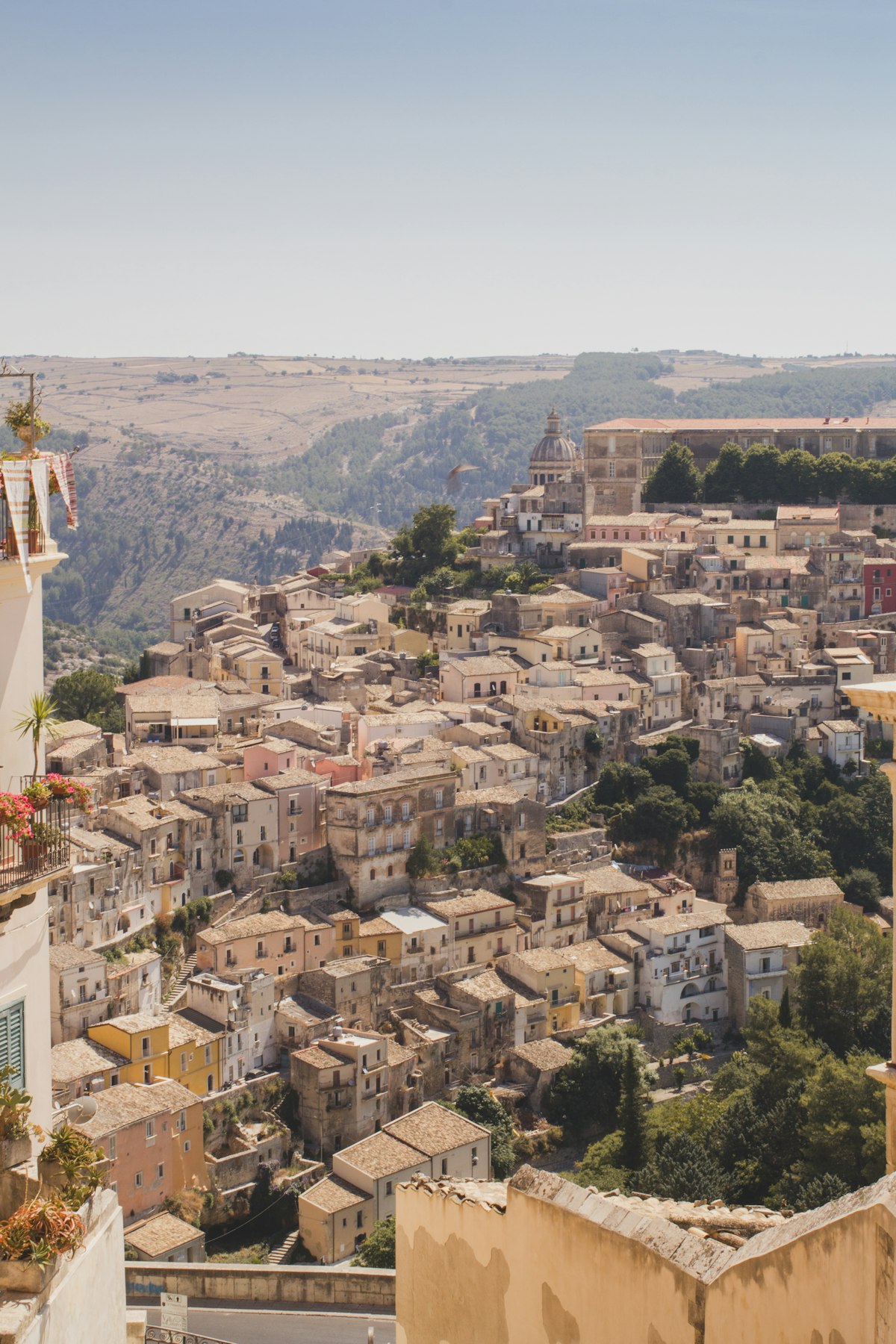
Day 6
AM walking tour of Ragusa Ibla followed by lunch in Marzamemi and final ride to Taormina. The origins of Ragusa can be traced back to the 2nd millennium BC, when there were several Sicel settlements in the area. The current district of Ragusa Ibla has been identified as Hybla Heraea. The ancient city, located on a 300 metres (980 ft) hill, came into contact with nearby Greek colonies, and grew thanks to the nearby port of Camerina. After a short period of Carthaginian rule, it fell into the hands of the ancient Romans and the Byzantines, who fortified the city and built a large castle. Ragusa was occupied by the Arabs in 848 AD and remained under their rule until the 11th century, when the Normans conquered it. Ragusa was selected as a county seat, and its first count was Geoffrey, son of Count Ruggero of Sicily.
Thereafter, Ragusa's history followed the events of the Kingdom of Sicily, created in the first half of the twelfth century. A Chiaramonte family fief, it remained the county capital after it has been unified with Modica in 1296, a status that it lost in the 15th century after a popular revolt. In 1693, Ragusa was devastated by a huge earthquake, which killed some 5,000 inhabitants. After the catastrophe, the city was largely rebuilt, and many Baroque buildings from that time remain in the city. Most of the population moved to a new settlement in the former district of Patro. The new municipality was called "Ragusa Superiore" (Upper Ragusa) and the ancient city "Ragusa Inferiore" (Lower Ragusa). Both cities remained separated until 1926, when they were merged to become a provincial capital in 1927 at the expense of Modica, which had been the former capital and the most populous and important city in the region since 1296.
In 1838, an asphalt deposit was discovered, which is still being worked. In 1848, together with the cities of Modica and Scicli, it rebelled against the Bourbon government to obtain the island's freedom and independence. In 1860, armed volunteers were immediately sent to help Garibaldi, who had just landed in Marsala. It became part of the Kingdom of Italy under the guidance of Senator Corrado Arezzo de Spuches di Donnafugata. In 1889, the Banca Popolare Cooperativa di Ragusa was founded, the first embryo of the current Banca Agricola Popolare di Ragusa. The bank thrived thanks to the huge wealth and prosperous agriculture that belonged to the now ex-county, and it immediately became an important point of reference for the whole Ibla economy.
In the early 20th century, socialist ideas spread particularly strongly in the Ragusa area compared to rest of the region, according to many fascist historians. Ragusa was described as a "fief of the reds", like that of Bologna. A strong political dialectic caused fascism to impose itself on Ragusa, which provoked a violent response similar to that in the Po Valley. On 29 January 1921, a group of fascists destroyed the socialist circle of Vittoria, killed a man and injured four others. Two months later in Ragusa, four people were killed and sixty were injured. The main promoter of fascist ideology in Ragusa was Totò Giurato- During the Second World War, Ragusa was one of many Sicilian towns in which the fascist regime of Benito Mussolini was deeply unpopular. The reasons were straightforward anti-Sicilian racism on the part of the fascist regime, which was central to the regime's ideology, and the antimafia campaign led by the fascist agent Cesare Mori, which was so heavy-handed, brutal and draconian that it managed to alienate huge swaths of the Sicilian population. Also, the fascist administration in Sicily was largely incompetent and indifferent to the local population. When food became scarce and the regime had to start rationing food, Sicily was designated as being the last to receive food aid. That often included food that was grown in Sicily (particularly wheat and fruit), which was then exported to Northern Italy although scarcity had become a major problem in Sicily. Police officers from Sicily were replaced with those from Northern Italy since the former were perceived by the regime to be more loyal to their local communities than to Mussolini. Those from Northern Italy were underpaid, which led to them quickly becoming corrupt and indifferent. Also, they often held attitudes that were contemptuous towards the Sicilian population.
When the combined British and American military operation to invade Sicily began (Operation Husky), the population of Ragusa deeply resented Mussolini and his regime. British forces landed to south and east of Ragusa along the coast, and American forces landed southwest of Ragusa in the Gulf of Gela. Both groups linked up in several towns in both locations, including Ragusa. The small detachment of fascist troops in Ragusa fled without fighting while the British and American forces approached. The local population welcomed the British and American soldiers with "unbridled enthusiasm"
On 6 May 1950, with a regular papal bull, Ragusa was raised to the dignity of diocese because of the wise and constant commitment of Msgr. Carmelo Canzonieri, the parish priest of Saint John the Baptist who later became auxiliary bishop of Messina before and then of Caltagirone. That took the territory from the archdiocese of Syracuse and the diocese of Noto. Since the 1990s, the economy of Ragusa has been developing towards the industrial sector, which is still growing rapidly, in contrast to the situation in Italy. The scarce presence of infrastructure has limited the great potential of this territory, but it remains the most important export area of Sicily.
Overnight Taormina
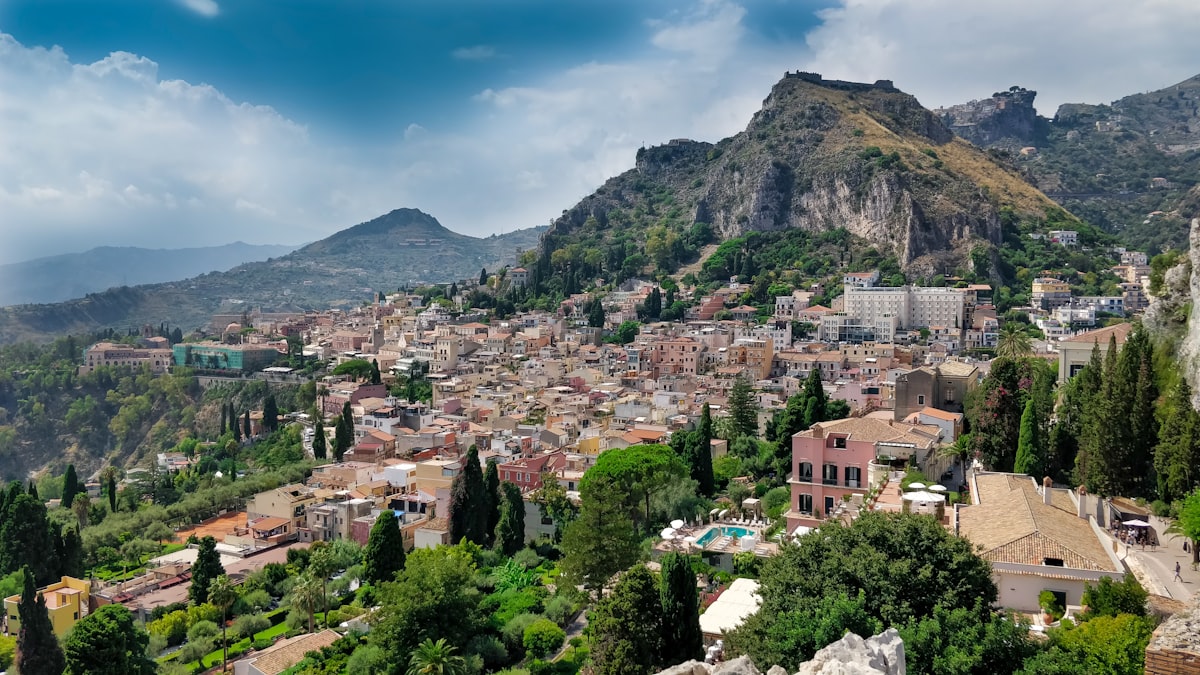
Day 7
Day trip to Mount Etna, one of the three most active Volcanoesin the world. Your will be picked up by a driver to take you to the closest point possible. A Cable car will then take you to the top of the Volcano where a local guide and a 4x4 specific vehicle will tour your around. At the end of the tour you will be taken to a local winery for a lunch and tasting.
Overnight Taormina
Day 8
Half day walking tour of Taormoina. A professional guide will pick you up and give you a tour of this amazing town. Taormina is a comune (municipality) in the Metropolitan City of Messina, on the east coast of the island of Sicily, Italy. Taormina has been a tourist destination since the 19th century. Its beaches on the Ionian sea, including that of Isola Bella, are accessible via an aerial tramway built in 1992, and via highways from Messina in the north and Catania in the south.
The history of Taormina dates back to before Ancient Greece established its first colony on Sicily in 734 BCE. After the fall of the Western Roman Empire, Taormina continued to rank as one of the more important towns of the island. Taormina followed the history of Sicily in being ruled by successive foreign monarchs. After the Italian unification, Taormina began to attract well-off tourists from northern Europe and then from all over the world.
Overnight Taormina
Day 9
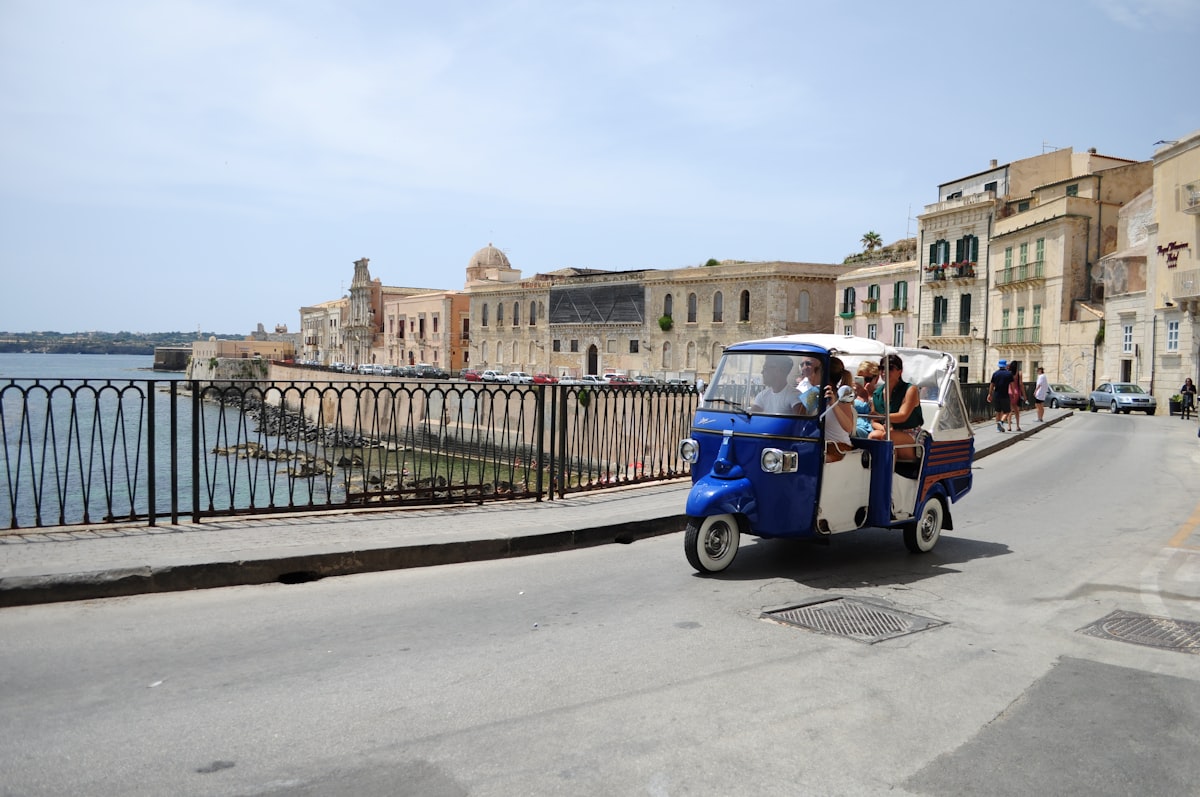
Full day to Siracusa. Your driver will drive you to Siracusa where you will meet your professional guide for a 5 hour service. Syracuse is a historic city on the Italian island of Sicily, the capital of the Italian province of Syracuse. The city is notable for its rich Greek and Roman history, culture, amphitheatres, architecture, and as the birthplace of the pre-eminent mathematician and engineer Archimedes.
This 2,700-year-old city played a key role in ancient times, when it was one of the major powers of the Mediterranean world. Syracuse is located in the southeast corner of the island of Sicily, next to the Gulf of Syracuse beside the Ionian Sea. It is situated in a drastic rise of land with 2,000 metres (6,600 ft) depths being close to the city offshore although the city itself is generally not so hilly in comparison.
The city was founded by Ancient Greek Corinthians and Teneans and became a very powerful citystate. Syracuse was allied with Sparta and Corinth and exerted influence over the entirety of Magna Graecia, of which it was the most important city. Described by Cicero as "the greatest Greek city and the most beautiful of them all",it equaled Athens in size during the fifth century BC. It later became part of the Roman Republic and the Byzantine Empire. Under Emperor Constans II, it served as the capital of the Byzantine Empire (663–669). Palermo later overtook it in importance, as the capital of the Kingdom of Sicily. Eventually the kingdom would be united with the Kingdom of Naples to form the Two Sicilies until the Italian unification of 1860.
In the modern day, the city is listed by UNESCO as a World Heritage Site along with the Necropolis of Pantalica. In the central area, the city itself has a population of around 125,000 people. Syracuse is mentioned in the Bible in the Acts of the Apostles book at 28:12 as Paul stayed there. The patron saint of the city is Saint Lucy; she was born in Syracuse and her feast day, Saint Lucy's Day, is celebrated on 13 December.
Overnight Taormina
Day 10
Depart Taormina to reach Catania airport and your next destination
Inclusions.
- All necessary transportation
- All guides where I mention guided tours
- Wine tour on mount Etna, cable car and 4x4 vehicle
Extras:
Hotels (Customized to your desire of 4 or 5*)
- Meals, entries , personal expenses, gratuities, everything not mentioned in the “included”
section
- Flights on your charge to be in Palermo and depart from Catania
PRICING: Customized based on your itinerary & hotel desires.

Derek Schemonitz
US Sales Rep of Dream Italy / Owner of Mr. Travel Agent, LLC